Themed collection Modern coordination chemistry

Modern coordination chemistry
This special issue of Dalton Transactions is to mark the 60th birthday of Professor Dr. Annie K. Powell. The issue highlights advances in Modern Coordination Chemistry.

Dalton Trans., 2019,48, 15318-15320
https://doi.org/10.1039/C9DT90209K
Metal-supported and -assisted stereoselective cooperative photoredox catalysis
In this perspective, we review those stereoselective photocatalytic reactions that use synergy between photoredox catalysts and transition metal catalysts.
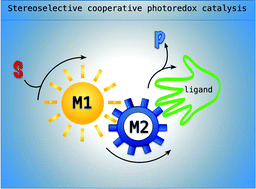
Dalton Trans., 2019,48, 15338-15357
https://doi.org/10.1039/C9DT02094B
Spin-crossover in iron(II)-Schiff base complexes
A collective overview of iron(II)-Schiff base complexes, showing abrupt and hysteretic SCO suitable for device applications, and the structure–property relationships governing the SCO of the complexes in the solid-state is presented.
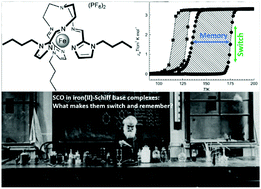
Dalton Trans., 2019,48, 15321-15337
https://doi.org/10.1039/C9DT02085C
Recent developments in single-molecule toroics
An update overview of emerging single-molecule toroics (SMTs) is expounded to elucidate the strategy to design SMTs and ultimately inspire the seeking of SMTs with enhanced toroidal moment.
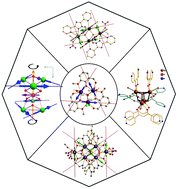
Dalton Trans., 2019,48, 15358-15370
https://doi.org/10.1039/C9DT02113B
Field-induced slow magnetic relaxation in the first Dy(III)-centered 12-metallacrown-4 double-decker
The first double-decker Ga(III)/Dy(III) 12-MC-4 complex has been isolated and magnetic studies revealed its SMM properties.
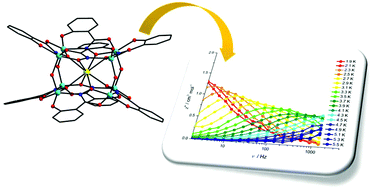
Dalton Trans., 2019,48, 15381-15385
https://doi.org/10.1039/C9DT02432H
Zinc–dysprosium functionalized amyloid fibrils
The heterometallic Zn2Dy2 entity bearing partially saturated metal centres covalently decorates a highly ordered amyloid fibril core and the functionalised assembly exhibits catalytic Lewis acid behaviour.
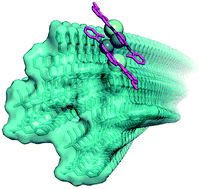
Dalton Trans., 2019,48, 15371-15375
https://doi.org/10.1039/C9DT01134J
Isostructural iron(III) spin crossover complexes with a tridentate Schiff base-like ligand: X-ray structures and magnetic properties
Two isostructural iron(III) spin crossover complexes show anion-size dependent spin crossover.
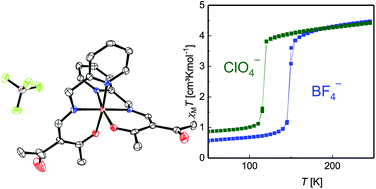
Dalton Trans., 2019,48, 15376-15380
https://doi.org/10.1039/C9DT00846B
Solution-phase decomposition of ferrocene into wüstite-iron oxide core–shell nanoparticles
FeO core–shell nanoparticles (NPs) are obtained by thermal decomposition of Cp2Fe in 1-octadecene and oleic acid and oleylamine. Cubic and spherical NPs are obtained whose size and shape can be controlled through adjusting reaction parameters.

Dalton Trans., 2022,51, 1603-1611
https://doi.org/10.1039/D1DT03222D
Magnetic anisotropy in trigonal planar Fe(II) bis(trimethylsilyl)amido complexes of the type [Fe{N(SiMe3)2}2L]—experiment and theory
The paper presents a combined experimental and theoretical study of the influence of the type of neutral ligand L on the electronic and magnetic properties of trigonal planar iron(II) bis(trimethylsilyl)amido complexes [Fe(N(SiMe3)2L].
![Graphical abstract: Magnetic anisotropy in trigonal planar Fe(ii) bis(trimethylsilyl)amido complexes of the type [Fe{N(SiMe3)2}2L]—experiment and theory](/en/Image/Get?imageInfo.ImageType=GA&imageInfo.ImageIdentifier.ManuscriptID=C9DT01702J&imageInfo.ImageIdentifier.Year=2019)
Dalton Trans., 2019,48, 15699-15712
https://doi.org/10.1039/C9DT01702J
Long-lived MLCT states for Ru(II) complexes of ferrocene-appended 2,2′-bipyridines
In this study, we present two ruthenium(II) diimine complexes appended with ferrocene which show metal to ligand charge transfer 3MLCT emission lifetimes around 630 ns.
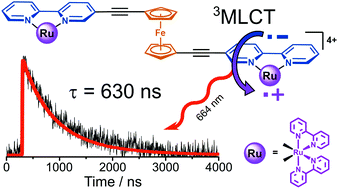
Dalton Trans., 2019,48, 15713-15722
https://doi.org/10.1039/C9DT02025J
Comparison of two field-induced ErIII single ion magnets
Herein we present the synthesis, and magnetic and photophysical properties of four mononuclear LnIII complexes, among which the two ErIII complexes 2 and 4 exhibit field-induced SIM behaviour that provides a new route towards air-stable erbium SIMs.
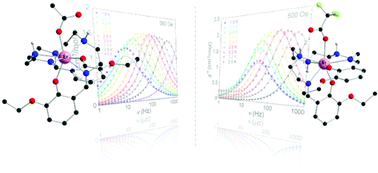
Dalton Trans., 2019,48, 15679-15686
https://doi.org/10.1039/C9DT02434D
Tetranuclear oxido-bridged thorium(IV) clusters obtained using tridentate Schiff bases
The reactions of tetravalent thorium, an element named after the Scandinavian God of thunder and war, with tridentate Schiff bases give tetranuclear complexes with the extremely rare {ThIV4(μ4-O)} unit and interesting properties.
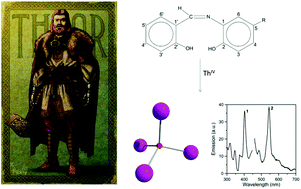
Dalton Trans., 2019,48, 15668-15678
https://doi.org/10.1039/C9DT03189H
New examples of triangular terbium(III) and holmium(III) and hexagonal dysprosium(III) single molecule toroics
The synthesis, structures, magnetism and ab initio calculations are presented for three new triangular Ln3 single molecule toroidal species, Ln = Tb, Dy and Ho, and for a new hexagonal Dy6 wheel compound.
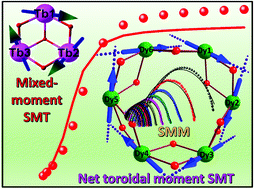
Dalton Trans., 2019,48, 15657-15667
https://doi.org/10.1039/C9DT02419K
Tetraoxolene-bridged rare-earth complexes: a radical-bridged dinuclear Dy single-molecule magnet
A radical bromanilate-bridged dinuclear Dy(III) complex exhibits improved single-molecule magnet performance over the parent compound with a diamagnetic bridge.

Dalton Trans., 2019,48, 15635-15645
https://doi.org/10.1039/C9DT01320B
Highly soluble fluorine containing Cu(I) AlkylPyrPhos TADF complexes
Newly luminescent Cu(I) AlkylPyrPhos complexes with a special focus on fluorine have been synthesized and comprehensively investigated by a variety of spectroscopic and theoretical methods.
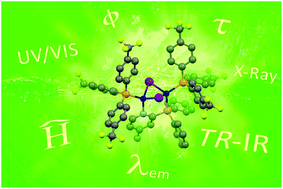
Dalton Trans., 2019,48, 15687-15698
https://doi.org/10.1039/C9DT02447F
Biological evaluation of optically pure chiral binuclear copper(II) complexes based on a rosin derivative as highly potential anticancer agents
An optically pure binuclear copper(II) complex was prepared based on a rosin derivative, which is a DNA/BSA binder and a potential drug with multifunctional anticancer effects.
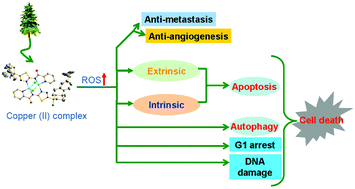
Dalton Trans., 2019,48, 15646-15656
https://doi.org/10.1039/C9DT01942A
Accessing γ-Ga2S3 by solventless thermolysis of gallium xanthates: a low-temperature limit for crystalline products
Alkyl-xanthato gallium(III) complexes, [Ga(S2COR)3] where R = Me, Et, iPr, nPr, nBu, sBu and iBu, have been synthesized and examined as potential precursors for gallium sulfides.
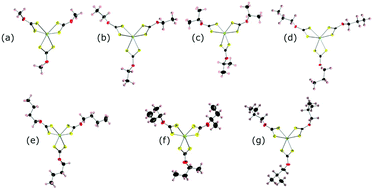
Dalton Trans., 2019,48, 15605-15612
https://doi.org/10.1039/C9DT02061F
Vibrational properties and cooperativity of the 3D spin crossover network [Fe(pyrazine)][Pt(CN)4]
Nuclear inelastic scattering experiments and DFT calculations have been performed to explore the vibrational properties and molecular modes for the high-spin and low-spin phases of the spin crossover network [Fe(pyrazine)][Pt(CN)4].
![Graphical abstract: Vibrational properties and cooperativity of the 3D spin crossover network [Fe(pyrazine)][Pt(CN)4]](/en/Image/Get?imageInfo.ImageType=GA&imageInfo.ImageIdentifier.ManuscriptID=C9DT02139F&imageInfo.ImageIdentifier.Year=2019)
Dalton Trans., 2019,48, 15625-15634
https://doi.org/10.1039/C9DT02139F
Synthesis, characterization and anti-cancer properties of water-soluble bis(PYE) pro-ligands and derived palladium(II) complexes
Water soluble bis(PYE) pro-ligands and derived Pd(II) complexes show activity against breast cancer cells.
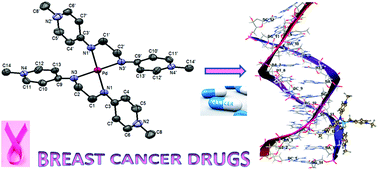
Dalton Trans., 2019,48, 15408-15418
https://doi.org/10.1039/C9DT01923E
Polyoxometalate-based high-spin cluster systems: a NMR relaxivity study up to 1.4 GHz/33 T
Paramagnetic polyoxometalates are of special interest with regard to their application as alternative contrast agents in nonhuman magnetic resonance imaging which is increasingly used in materials science and process engineering.
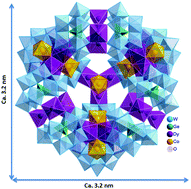
Dalton Trans., 2019,48, 15597-15604
https://doi.org/10.1039/C9DT02052G
Design and photophysical studies of iridium(III)–cobalt(III) dyads and their application for dihydrogen photo-evolution
We report several new dyads constituted of cationic iridium(III) photosensitizers and cobalt(III) catalyst connected via free pendant pyridine on the photosensitizers.
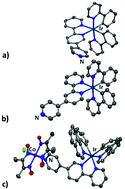
Dalton Trans., 2019,48, 15567-15576
https://doi.org/10.1039/C9DT01989H
Knock-on synthesis of tritopic calix[4]pyrrole host for enhanced anion interactions
Anion interactions have been optimized in a tritopic host prepared by using ‘knock-on’ synthesis of calix[4]pyrrole and their anion binding properties evaluated using different spectroscopic methods.
![Graphical abstract: Knock-on synthesis of tritopic calix[4]pyrrole host for enhanced anion interactions](/en/Image/Get?imageInfo.ImageType=GA&imageInfo.ImageIdentifier.ManuscriptID=C9DT02365H&imageInfo.ImageIdentifier.Year=2019)
Dalton Trans., 2019,48, 15583-15596
https://doi.org/10.1039/C9DT02365H
All about that base: investigating the role of ligand basicity in pyridyl complexes derived from a copper-Schiff base coordination polymer
Ligand pKa and Hammett parameter are key in rationalising the formation of complexes with a soluble copper(II) Schiff base unit.
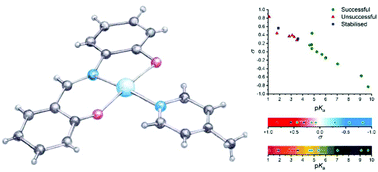
Dalton Trans., 2019,48, 15553-15559
https://doi.org/10.1039/C9DT01527B
The influence of the FeCp(CO)2+ moiety on the dynamics of the metalloid [Ge9(Si(SiMe3)3)3]− cluster in thf: synthesis and characterization by time-resolved absorption spectroscopy
Photoexcitation of a newly synthesized, neutral tetrasubstituted Ge9 cluster with a covalently bound transition metal substituent led to a complete ground state recovery within 150 ps indicating the strong influence of the Fe moiety.
![Graphical abstract: The influence of the FeCp(CO)2+ moiety on the dynamics of the metalloid [Ge9(Si(SiMe3)3)3]− cluster in thf: synthesis and characterization by time-resolved absorption spectroscopy](/en/Image/Get?imageInfo.ImageType=GA&imageInfo.ImageIdentifier.ManuscriptID=C9DT02091H&imageInfo.ImageIdentifier.Year=2019)
Dalton Trans., 2019,48, 15577-15582
https://doi.org/10.1039/C9DT02091H
Spin state solvomorphism in a series of rare S = 1 manganese(III) complexes
Structural, magnetic and spectroscopic data on four new spin triplet Mn3+ complexes reveals a large magnetic anisotropy. Spin state is sensitive to lattice contents as the spin quintet ground state is stabilized on co-crystallization with ethanol.
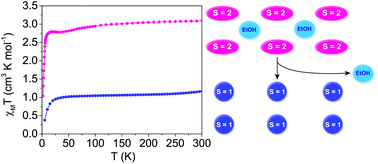
Dalton Trans., 2019,48, 15560-15566
https://doi.org/10.1039/C9DT02476J
Synthesis, structure and electrochemical characterization of an isopolytungstate (W4O16) held by MnII anchors within a superlacunary crown heteropolyanion {P8W48}
The first example of an isopolyanion (W4O16) held by redox-active MnII anchors within an archetypal superlacunary heteropolyanion {P8W48}.
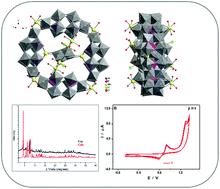
Dalton Trans., 2019,48, 15545-15552
https://doi.org/10.1039/C9DT02478F
Correlating magnetic anisotropy with [Mo(CN)7]4− geometry of MnII–MoIII magnetic frameworks
The magnetic coercivity of four new heptacyanomolybdate(III)-based coordination polymers is correlated with the geometry of the [MoIII(CN)7]4− anion and the cyanide bridging pattern of the framework.
![Graphical abstract: Correlating magnetic anisotropy with [Mo(CN)7]4− geometry of MnII–MoIII magnetic frameworks](/en/Image/Get?imageInfo.ImageType=GA&imageInfo.ImageIdentifier.ManuscriptID=C9DT02164G&imageInfo.ImageIdentifier.Year=2019)
Dalton Trans., 2019,48, 15493-15500
https://doi.org/10.1039/C9DT02164G
Ionic-liquid-based synthesis of tellurium–rhenium carbonyls with specific reaction control
The novel tellurium rhenium carbonyls [TeI2Re(CO)5][AlCl4] (1), [BMIm][Te2I4(μ-I)2Re(CO)4] (2), {Te3I2(μ-I)3(μ3-I)}Re(CO)3 (3) and [BMIm][(Te2)3{Re(CO)3}2{Re(CO)4}3] (4) were prepared by reacting TeI4 and Re2(CO)10 in ionic liquids (ILs).
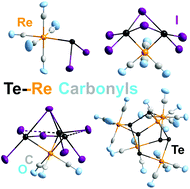
Dalton Trans., 2019,48, 15521-15528
https://doi.org/10.1039/C9DT01897B
Spiropyrans for light-controlled drug delivery
The supramolecular assembly of acetylsalicylic acid to a merocyanine–Zn complex translates into a photo-controllable drug delivery system.
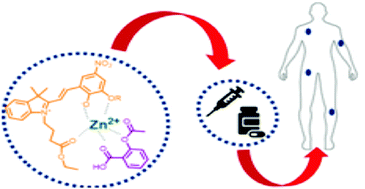
Dalton Trans., 2019,48, 15537-15544
https://doi.org/10.1039/C9DT02092F
Abrupt spin crossover in iron(III) complexes with aromatic anions
Two iron(III) complexes, [Fe(qsal-X)2]OTs·nH2O, are found to exhibit abrupt spin crossover with the spin transition temperature substituent dependent, and X⋯O halogen bonds linking the spin centres.

Dalton Trans., 2019,48, 15515-15520
https://doi.org/10.1039/C9DT02373A
Field-induced slow magnetic relaxation in two-dimensional and three-dimensional Co(II) coordination polymers
Two two-dimensional and three-dimensional Co(II) coordination polymers with slow magnetic relaxation are reported, which enlarge the family of high-dimensional coordination polymers exhibiting single ion magnet behavior.
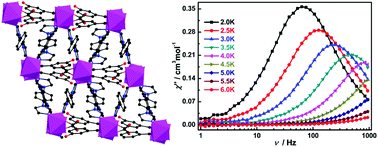
Dalton Trans., 2019,48, 15529-15536
https://doi.org/10.1039/C9DT02070E
Photophysical and biological investigation of phenol substituted rhenium tetrazolato complexes
Rhenium tetrazolato complexes appended to phenol substituents are exploited for cell labelling.
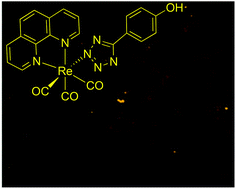
Dalton Trans., 2019,48, 15613-15624
https://doi.org/10.1039/C9DT02198A
Trivalent copper stabilised by acetylacetone dithiocarbazate Schiff base ligands: structural, spectroscopic and electrochemical properties
The copper coordination chemistry of bis(dithiocarbazate) Schiff base ligands derived from acetylacetone yields a diversity of products depending on the reaction conditions and presence of oxygen. Both di- and trivalent copper complexes have been isolated and characterised.
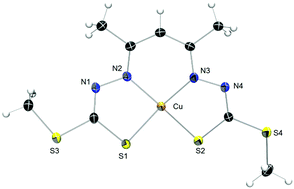
Dalton Trans., 2019,48, 15501-15514
https://doi.org/10.1039/C9DT02071C
A highly augmented, (12,3)-connected Zr-MOF containing hydrated coordination sites for the catalytic transformation of gaseous CO2 to cyclic carbonates
A Zr-MOF, which contains partially hydrated, 12-connected {Zr6} nodes and extended carboxylate ligands was synthesized, characterised and utilised in CO2 cycloaddition catalysis.
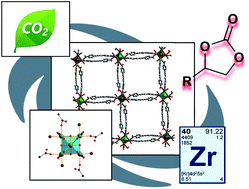
Dalton Trans., 2019,48, 15487-15492
https://doi.org/10.1039/C9DT02117E
Investigation of the magnetic anisotropy in a series of trigonal bipyramidal Mn(II) complexes
The trigonal symmetry around the MnII ion is fine-tuned to control the rhombic zero-field splitting.
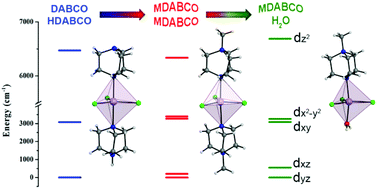
Dalton Trans., 2019,48, 15480-15486
https://doi.org/10.1039/C9DT02187F
High relaxation barrier in neodymium furoate-based field-induced SMMs
Two new neodymium molecular magnets of formula {[Nd(α-fur)3(H2O)2]·DMF}n (1) and {[Nd0.065La0.935(α-fur)3(H2O)2]}n (2), α-fur = C4H3OCOO, have been synthesized and characterized.
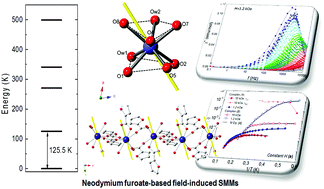
Dalton Trans., 2019,48, 15386-15396
https://doi.org/10.1039/C9DT02047K
Azamacrocycles and tertiary amines can be used to form size tuneable hollow structures or monodisperse oxide nanoparticles depending on the ‘M’ source
1,4,8,11-Tetraazacyclodecane plus (a) a silicon catecholate ion generates novel hollow tetragonal crystalline materials, and (b) tetramethoxysilane generates amorphous silica sols.
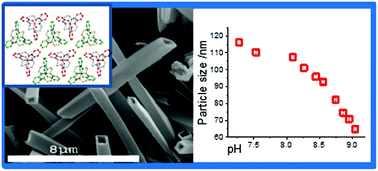
Dalton Trans., 2019,48, 15470-15479
https://doi.org/10.1039/C9DT02080B
Downsizing of robust Fe-triazole@SiO2 spin-crossover nanoparticles with ultrathin shells
Robust hybrid [Fe(Htrz)2(trz)](BF4)@SiO2 nanoparticles with reduced sizes (from ca. 90 to 28 nm) and ultrathin silica shells (<3 nm) have been obtained, presenting abrupt spin transition and reduced thermal hysteresis.
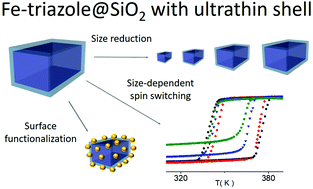
Dalton Trans., 2019,48, 15465-15469
https://doi.org/10.1039/C9DT02086A
Synthesis of copper(I) cyclic (alkyl)(amino)carbene complexes with potentially bidentate N^N, N^S and S^S ligands for efficient white photoluminescence
Copper(I) complexes of cyclic (alkyl)(amino)carbenes coordinated to monodentate or hemilabile guanidinato and formamidinato complexes show intense photoluminescence including white emissions.
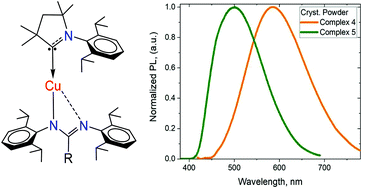
Dalton Trans., 2019,48, 15445-15454
https://doi.org/10.1039/C9DT02036E
Phosphine-functionalised tris(pyrazolyl)methane ligands and their mono- and heterobimetallic complexes
New phosphine-functionalised tris(pyrazolyl)methane ligands, their coordination flexibility and their ability to generate heterobimetallic complexes are presented.
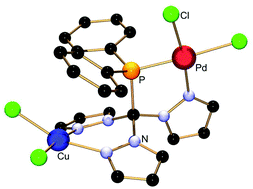
Dalton Trans., 2019,48, 15397-15407
https://doi.org/10.1039/C9DT02057H
Heterometallic 3d–4d coordination polymers assembled from trans-[RuIII(L)(CN)2]− tectons and 3d cations
Two families of magnetic heterometallic coordination polymers (1D and 2D) have been assembled using heteroleptic dicyanido-RuIII building blocks.
![Graphical abstract: Heterometallic 3d–4d coordination polymers assembled from trans-[RuIII(L)(CN)2]− tectons and 3d cations](/en/Image/Get?imageInfo.ImageType=GA&imageInfo.ImageIdentifier.ManuscriptID=C9DT01593K&imageInfo.ImageIdentifier.Year=2019)
Dalton Trans., 2019,48, 15455-15464
https://doi.org/10.1039/C9DT01593K
Dinuclear helicate and tetranuclear cage assembly using appropriately designed ditopic triazole-azine ligands
Architecture, helicate or cage, is controlled by choice of meta vs. para phenylene linker in new, robust, ditopic triazole-pyrimidine ligands.
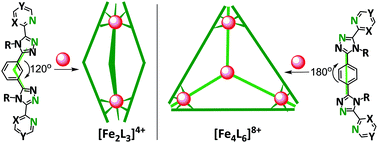
Dalton Trans., 2019,48, 15435-15444
https://doi.org/10.1039/C9DT01890E
Phosphine-substituted 1,2,3-triazoles as P,C- and P,N-ligands for photoluminescent coinage metal complexes
A series of homo- and hetero-polynuclear coinage metal complexes based on a phosphine-substituted 1,2,3-triazole system was synthesized.
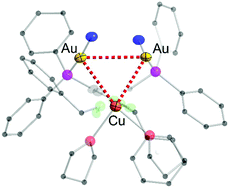
Dalton Trans., 2019,48, 15427-15434
https://doi.org/10.1039/C9DT01239G
Correlating magnetic anisotropy with the subtle coordination geometry variation of a series of cobalt(II)-sulfonamide complexes
The distortion degree from the ideal tetrahedral geometry has been correlated with the zero-field splitting parameter in a series of mononuclear cobalt(II)-sulfonamide complexes with a CoN4 coordination environment.
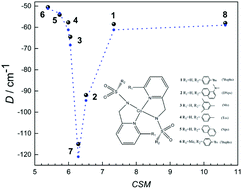
Dalton Trans., 2019,48, 15419-15426
https://doi.org/10.1039/C9DT01296F
About this collection
This special collection of Dalton Transactions marks the 60th birthday of mentor, colleague and friend, Professor Annie Powell.
This collection of over 40 reports highlights emerging trends in modern coordination chemistry and serves to reflect the many diverse areas where Annie’s work has impacted upon the field of inorganic chemistry, including molecular magnetism, theoretical modelling, structure, spectroscopy, bioinorganic and supramolecular chemistry.